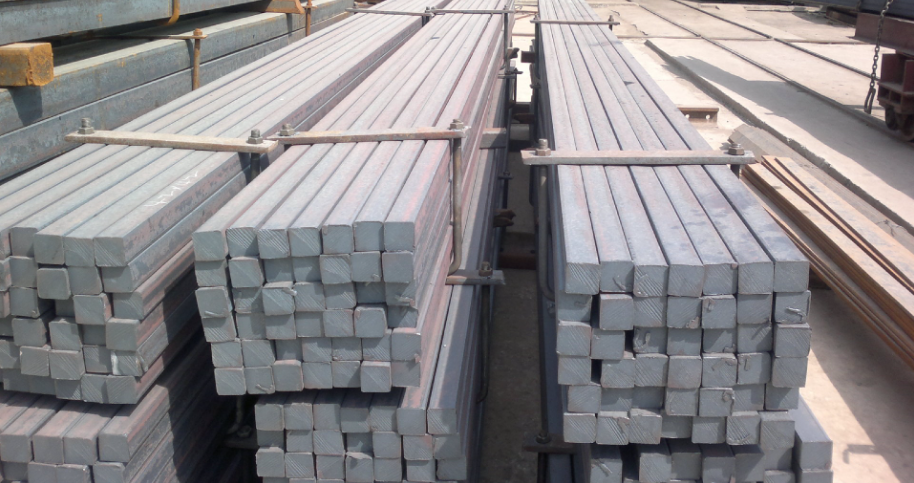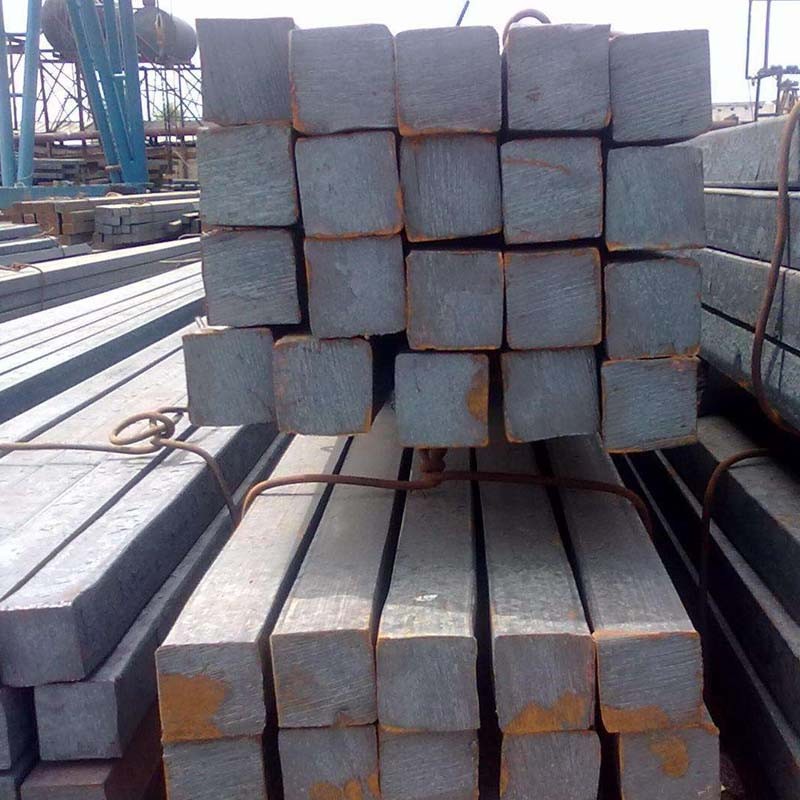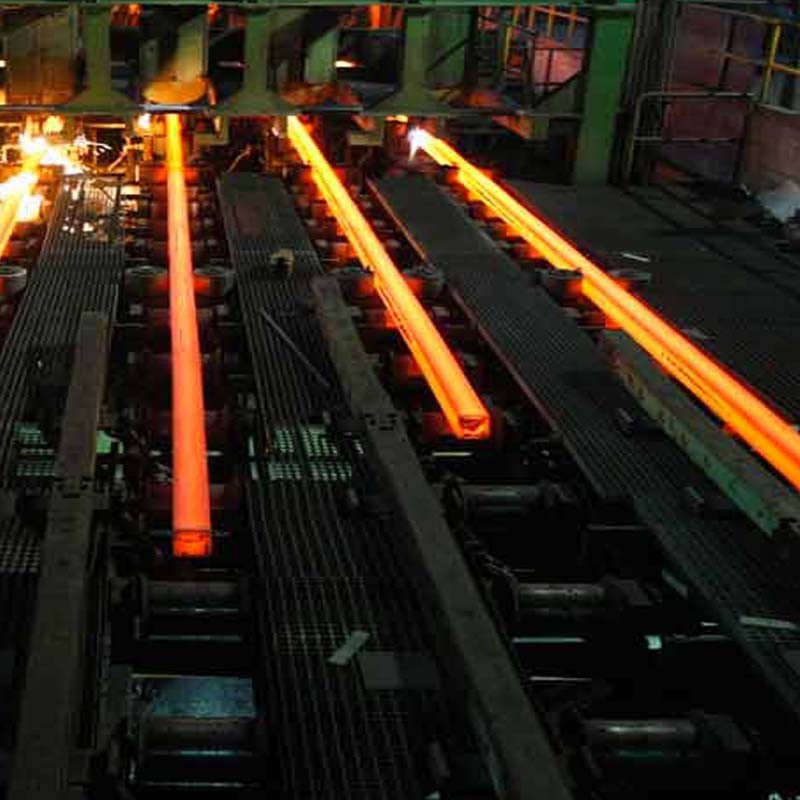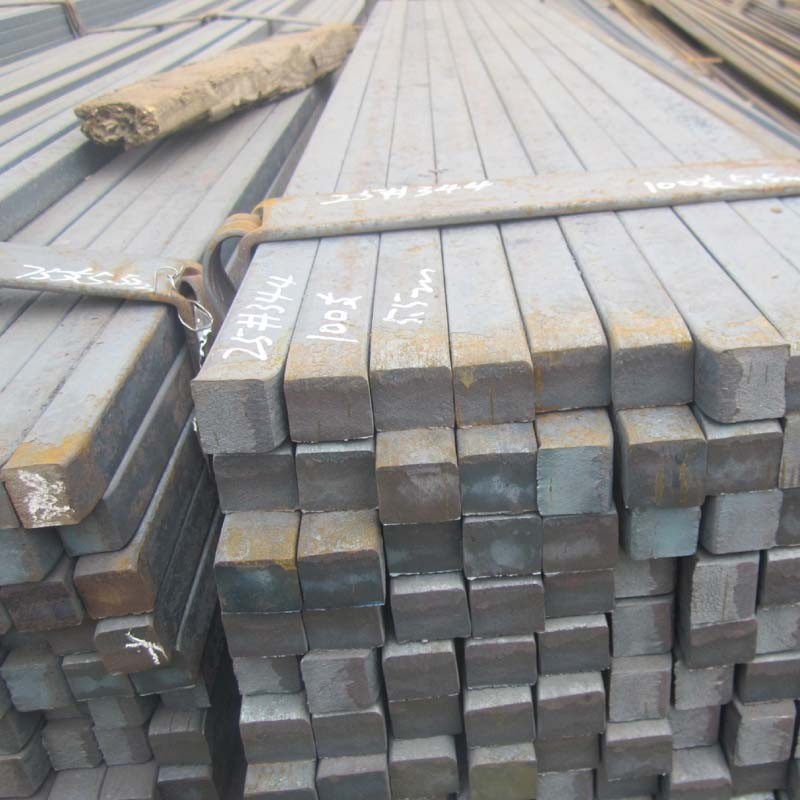Square steel is a steel that has a square section with four equal sides. It is usually processed from hot-rolled or cold-rolled steel plate, and its cross-sectional shape is square. Square steel can be cut and processed according to customer requirements, so it has high flexibility in various sizes and specifications. This allows square steel to meet the needs of different projects and is widely used in construction and manufacturing industries.
The material of square steel is mainly carbon steel, which contains high carbon element. It has excellent mechanical properties, high strength, good toughness, strong plasticity, and good wear resistance and corrosion resistance. These properties make square steel perform well in various engineering fields.
There are many specifications of square steel, which are mainly distinguished according to their cross-sectional dimensions. Generally speaking, the larger the cross-sectional size of square steel, the stronger its bearing capacity. Common square steel specifications are 8#, 10#, 12#, 14#, 16#, etc., where the numbers represent the section width.
The manufacturing process of square steel includes hot rolling and cold drawing. Hot-rolled square steel is made by heating the steel to a certain temperature and pressing it through rolling machinery. The surface of hot-rolled square steel is relatively rough, but its mechanical properties are better. Cold-drawn square steel is made by cold-working hot-rolled square steel. Its surface is smooth, but its strength and toughness are slightly lower than hot-rolled square steel.
Square steel is a steel with a square cross-section, characterized by the following:
1. High strength and hardness
Due to its special cross-sectional shape, square steel has high bending and shear strength, and also has high hardness.
2. Precise size
The manufacture of square steel requires strict smelting and rolling processes, so its dimensions are relatively accurate, and it is often used in occasions that require high dimensions.
3. Good plasticity and weldability
Although square steel has high hardness, its plasticity and weldability are still good, which can meet certain plasticity and processability requirements.
4. Wide range of applications
Square steel is a common steel, widely used in construction engineering, manufacturing, transportation and other fields.
Square steel is also widely used:
1. Under construction
The high strength and hardness of square steel make it often used to build frame structures, wall supports and other components of buildings, which improves the stability and safety of buildings.
2. In manufacturing
Square steel can be used to manufacture equipment such as machine tools, automobiles, and rail vehicles, and is often used to produce some important support components.
3. In transportation
Square steel is also commonly used in the construction of ships and bridges. Its high strength and corrosion resistance can ensure the stability and safety of vehicles.
4. In the field of machinery manufacturing
Square steel is often used to manufacture parts such as machine bases and bearing housings. Its strength and durability can ensure the stability and service life of the machine.
5. In the field of logistics
Square steel is often used to make shelves, and its load-bearing capacity and stability can ensure the safe storage of goods.
To sum up, square steel is a common steel material with high strength, hardness and precise dimensions. It has been widely used in construction engineering, manufacturing, transportation and other fields.
In China, square steel, like other steel products, is produced and regulated by Chinese National Standards (GB/T) or Industry Standards. The primary standard governing square steel in China is:
GB/T 6728-2017: This standard specifies the classification, code, size, shape, weight, technical requirements, test methods, inspection rules, packaging, marking, and quality certification for cold-formed steel hollow sections, including square steel tubes. It covers both general structural purposes and machinery manufacturing applications.
GB/T 6728-2017 ensures that square steel produced and used in China meets specific quality and safety standards. It includes requirements for dimensions, tolerances, chemical composition, mechanical properties, and other technical specifications to ensure the reliability and suitability of square steel for various construction, manufacturing, and engineering purposes.
In addition to the specific standard mentioned above, other related Chinese National Standards or Industry Standards might apply to square steel depending on the application and the specific product requirements.
In the United States, square steel is typically produced and sold in accordance with ASTM (American Society for Testing and Materials) standards. The most common ASTM standard for square steel is:
ASTM A500: This specification covers cold-formed welded and seamless carbon steel square, rectangular, and special-shaped structural tubing. It defines the requirements for mechanical properties, chemical composition, dimensions, and tolerances of square steel used in various structural applications.
ASTM A500 is widely used in the construction industry for buildings, bridges, and other structures where square steel's strength and versatility are essential. The standard ensures that the square steel tubes meet specific quality and performance criteria, making them reliable for use in a wide range of engineering and architectural projects.
In the United Kingdom, square steel, along with other steel products, is manufactured and supplied in accordance with British Standards (BS) and European Norms (EN). The most relevant standards for square steel in the UK are:
BS EN 10219-2: This standard specifies the technical delivery conditions for cold-formed welded structural hollow sections of non-alloy and fine grain steels. It includes requirements for square and rectangular hollow sections used in construction and structural applications.
BS EN 10210-2: This standard covers the technical delivery conditions for hot-finished structural hollow sections of non-alloy and fine grain steels. It includes requirements for square and rectangular hollow sections used in structural applications.
BS 5950-1: Structural use of steelwork in building - Code of practice for design - Rolled and welded sections: This British Standard provides guidance on the design of structural steelwork using rolled and welded sections, including square steel sections. It outlines design principles, material properties, and safety considerations.
BS 4848-4: Hot-rolled structural steel sections - Part 4: Square and rectangular sections: This standard specifies the dimensions, sectional properties, and mass per unit length of hot-rolled square and rectangular steel sections.
BS EN 10025-2: This standard covers the technical delivery conditions for non-alloy structural steels. While it does not specifically focus on square steel, it includes various grades of steel used in structural applications, and square steel might be produced from these materials.
As a material widely used in construction and manufacturing, square steel has always been concerned about dimensional deviation, angle deviation, and shape deviation. Therefore, in order to ensure the accuracy and quality of square steel, the allowable deviation specification for square steel has been formulated, which clearly stipulates the size, angle and shape deviation of square steel.
Square steel size deviation standard
The size deviation of square steel specifies the allowable error range for the length, width and thickness of square steel. According to national standards, the size deviation of square steel should meet the following standards:
1. Length deviation: no more than ±5mm of the original length or ±0.5% of the actual length;
2. Width deviation: no more than ±5mm of this width or ±0.5% of actual width;
3. Thickness deviation: no more than ±0.5mm of the original thickness or ±0.05 times of the actual thickness.
Square steel angle deviation standard
The angular deviation of square steel stipulates the error range allowed for each angle in the cross section of square steel. According to national standards, the angle deviation of square steel should meet the following standards:
1. End face verticality: no more than 0.2mm/m;
2. Side straightness: no more than 0.2mm/m;
3. The angle error between the two sides: no more than 1.5°;
4. Foot curvature: no more than 1/100 of the opening width.
Square steel shape deviation standard
The shape deviation of square steel stipulates the allowable error range in the shape of square steel. According to national standards, the shape deviation of square steel should meet the following standards:
1. Right angle: no more than 2mm/m;
2. Straightness: no more than 4mm;
3. Section inclination: no more than 0.5%;
4. Edge chamfer: not less than 1.5mm.












